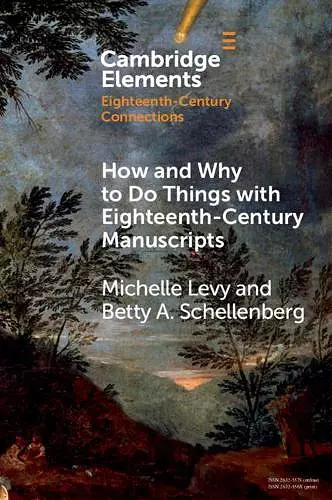How and Why to Do Things with Eighteenth-Century Manuscripts
Betty A Schellenberg author Michelle Levy author
Format:Paperback
Publisher:Cambridge University Press
Published:16th Dec '21
Currently unavailable, and unfortunately no date known when it will be back

Demonstrates the rich variety and importance of literary manuscripts—of poems, letters, and fiction—produced between 1730 and 1820.
This Element examines eighteenth-century manuscript forms, their functions in the literary landscape of their time, and the challenges and practices of manuscript study today. This title is also available as Open Access on Cambridge Core.This Element examines eighteenth-century manuscript forms, their functions in the literary landscape of their time, and the challenges and practices of manuscript study today. Drawing on both literary studies and book history, Levy and Schellenberg offer a guide to the principal forms of literary activity carried out in handwritten manuscripts produced in the first era of print dominance, 1730-1820. After an opening survey of sociable literary culture and its manuscript forms, numerous case studies explore what can be learned from three manuscript types: the verse miscellany, the familiar correspondence, and manuscripts of literary works that were printed. A final section considers issues of manuscript remediation up to the present, focusing particularly on digital remediation. The Element concludes with a brief case study of the movement of Phillis Wheatley's poems between manuscript and print. This title is also available as Open Access on Cambridge Core.
'Levy and Schellenberg's work is part of the excellent and relevant Cambridge Elements series and stands as a very important contribution to reading connections between archival history, library and archive practices, and literary history.' Laura Søvsø Thomasen, Metascience
'… offers an overview of a field as well as a foundation on which it can continue to expand in the future.' Rachael Scarborough King, The Scriblerian and the Kit-Cat
ISBN: 9781108926133
Dimensions: 230mm x 152mm x 4mm
Weight: 150g
75 pages